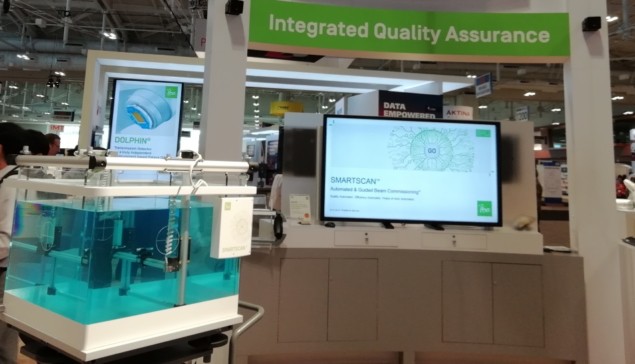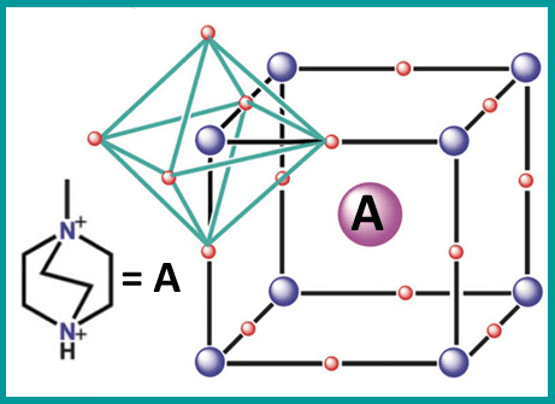
Commissioning a new linear accelerator is an intensive process, requiring a thousand or so beam measurements on a water phantom. This can take days or even weeks to complete, and the repetitive nature of this task makes it prone to user error.
To ease this procedure, IBA Dosimetry launched its SMARTSCAN beam commissioning system. Announced at this week’s AAPM Annual Meeting, SMARTSCAN guides the user through the entire linac commissioning workflow – from system setup to scanning of the entire data set – and automates repetitive tasks. As a result, beam data commissioning and accelerator quality assurance (QA) is consistently executed with optimal quality. SMARTSCAN is connected to myQA, IBA Dosimetry’s Integrated QA platform
“IBA is launching a water phantom that automates the commissioning steps,” says IBA’s Ralf Schira. He notes that there are some crucial steps where the physicist still needs control, and that SMARTSCAN provides guidance through those procedures. “It’s not a black box, it’s more like a navigation system.”
 AdvertisementSchira explains that the development was motivated by IBA’s discussions with physicists as to what they find to be the most problematic part of beam commissioning. As well as the process taking too long and being too user intensive, many interviewees pointed out that they were not 100% confident that all of the scans were 100% correct.
AdvertisementSchira explains that the development was motivated by IBA’s discussions with physicists as to what they find to be the most problematic part of beam commissioning. As well as the process taking too long and being too user intensive, many interviewees pointed out that they were not 100% confident that all of the scans were 100% correct.
“SMARTSCAN addresses both problems, by making the process more efficient and providing the required beam quality data,” says Schira. “This gives the peace of mind that beam commissioning has been done perfectly.” This, in turn, provides the foundation for safe and accurate treatment of every patient.
To ensure optimal beam data quality, SMARTSCAN checks every single scan during the process, with suspicious measurements flagged immediately. SMARTSCAN also enables commissioning work to be completed efficiently in less time, allowing faster clinical implementation of new equipment. It does this by creating the most optimal scan sequence, as well as by adapting the speed of detector motion.
“SMARTSCAN provides a great deal of intelligence and guidance,” Schira tells Physics World.
Monte Carlo accuracy
The AAPM meeting also saw IBA launch SciMoCa, a Monte Carlo-powered secondary dose check and plan verification software. Monte Carlo is generally accepted as the gold standard for dose calculation accuracy in treatment planning. Now, SciMoCa makes Monte Carlo accuracy available for secondary independent dose calculation and verification, allowing users to verify their treatment plans with an equally robust QA system.
“Introducing Monte Carlo plan QA seamlessly for all major linacs, TPS systems and treatment modalities introduces an additional level of QA accuracy in our industry,” says Jean-Marc Bothy, president of IBA Dosimetry GmbH. “At this year’s AAPM in Nashville we received exceptionally positive feedback from the medical physics community about SciMoCa’s unprecedented Monte Carlo workflow automation, calculation speed and proven accuracy”.
The FDA-cleared SciMoCa software is developed by Radialogica and Scientific RT. IBA has entered into a global distribution agreement with Radialogica.


